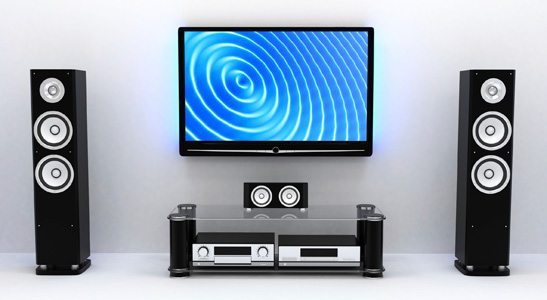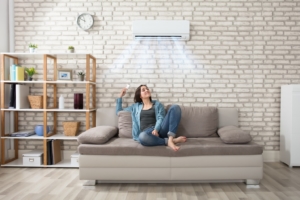You don’t need to buy new equipment to improve your existing home theater. Often, the television and other audio/video equipment you already have are not being used to their maximum potential. Here’s a list of 10 easy tips to help you make the most of your existing system or if you’re looking to improve your Home Cinema Dubai.
1) Check the settings on your receiver: Many popular home theater receivers now include automatic settings based on the type of program you are listening to (movie, music, etc). The manual usually has detailed instructions on what settings to use, as well as how to adjust balance, fade, treble, and bass. This is usually a two-person job, so that one person can be in the normal listening area giving an opinion while the other person adjusts the settings. One more thing: make sure the TV’s built-in speakers are turned off when you are using your surround sound.
2) Get a power conditioner: There are products that provide several different features. Surge suppression (what most people are familiar with) is just the tip of the iceberg. Noise filtration will help remove electrical interference caused by the components themselves, as well as noise in the power lines from your house. Voltage regulation provides steady, continuous power to your electronics, extending their lifespan and performance by reducing fluctuations in incoming power.
3) Buy a universal remote control: Universal remotes are much easier to program now than when they first came on the market. Most models include built-in coding for major TV and component brands, and many can “learn” the codes for anything they do not already know. Personally, I’m a fan of home automation systems that control more than just your theater, but that is an entirely different article.
4) Adjust the placement of your speakers: If you have bookshelf speakers, check to make sure they are located in places that provide good surround sound effects, not just on the most convenient flat surface. Most speakers have attachment points for wall or ceiling mounts to get ideal height placements and angles. Another great option is speaker stands. These can be used to raise or lower the speaker to optimal listening height (they should be at ear level when you are listening). And you can place the stand at any location in your room to get the best sound.
5) Invest in quality cables: Cables are the most often overlooked item in a theater. You buy a great 1080p TV, expensive receiver, quality blu-ray player, and then connect them all together with least expensive HDMI cables from your local discount store. This is not going to produce picture or sound that you are expecting or that make you happy. The cables that pass your audio and video signals are an integral part of the performance of the system. Don’t falter here. This is the home stretch. Invest in quality cables that are a comparable quality to the equipment you are using. This will allow you to get the most out of your a/v system.
6) Provide adequate ventilation: Electronic components can generate a lot of heat, especially if they have hard drives or amplifiers inside. Make sure components are placed so that they have adequate ventilation to dissipate heat. Heat build-up can shorten (or end) the lifespan of your equipment. Open shelves are great for ventilation, but when you move to an enclosed cabinet, you will likely need to provide either active (fans) or passive (holes with grill covers) ventilation. Newer TV stands and entertainment centers often have built-in passive ventilation. But sometimes this still is not enough. If you can feel the heat off your system every time you get near it, you need to do something. Look for products that have a temperature controller (thermostat) or that can be turned off when your components are not in use.
7) Put down a rug: If you have lots of hard, flat surfaces in your room (hardwood floors, big stretches of bare walls, or wood furniture), your audio system might be producing acoustic reflections that interfere with the clean, crisp sound coming out of the speakers. Simple things such as hanging draperies, putting down an area rug, or placing acoustic diffusers in the room will help eliminate this. You want to recreate that hushed feeling that you get when you walk into a theater, not the echo effects of an empty house.
8) Adjust your lighting: Too much ambient lighting can wash out the picture from your TV or projector. And too little light can cause eye strain. Find some accent lighting that is just right, and locate it so that it does not glare off the TV. Install draperies or shades that can block light from windows or other rooms if necessary.
9) Add a subwoofer: This is the one in a 5.1 system. Media designed for surround sound (DVDs and blu-rays) is now recorded using separate audio channels. To get the full range of sound during playback, you need to use all of the channels. Your subwoofer will provide you with the low bass range of sounds: that deep roar when an aircraft flies overhead, the thumping beat of the music in a club scene, even the impact of a car crash. Without a sub, you only get the higher channels of audio without a well-rounded full register.
10) Move your TV: You want to be sure you are not sitting too close to or too far from your TV. A loose rule of thumb is to sit a distance of two times the diagonal size from the screen. So, if the screen is 42 inches, you should place your seating approximately seven feet (84 inches) from the screen. A little up or back is okay, just not too far. And your eye level should be perpendicular to the center of the screen. You don’t want the TV too high or too low. This will be distracting and you lose the sense of immersion in the video. Use a wall mount or find a TV cabinet that is the correct height for your application.
Bonus Tip Number 11: Consider consulting a professional systems designer or integrator for their suggestions on what to do with your current equipment. You might be surprised at how easy (and inexpensive) it can be to improve your home theater experience.




